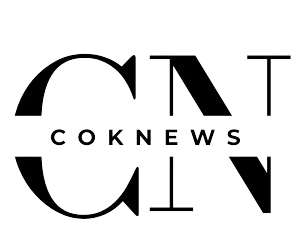Concrete is one of the most widely used construction materials, known for its durability, strength, and versatility. As a contractor, having a solid understanding of concrete estimating services is crucial to ensure the success of your projects. This article will provide an in-depth look at concrete estimating services, covering essential aspects such as the estimation process, the importance of accurate estimates, and best practices for contractors.
What Are Concrete Estimating Services?
Concrete estimating services involve assessing the quantity and cost of materials and labor required for concrete-related projects. These services are essential for contractors looking to bid on projects accurately. A precise estimate ensures that the contractor can provide competitive pricing while maintaining profitability. Concrete estimating can cover various projects, including foundations, slabs, pavements, and decorative concrete work.
The Importance of Accurate Estimates
Accurate concrete estimates are vital for several reasons:
- Budget Management: Accurate estimates help contractors manage their budgets effectively, allowing them to allocate resources appropriately and avoid cost overruns.
- Competitive Bidding: In a competitive market, precise estimates enable contractors to submit bids that are both appealing to clients and profitable for the business.
- Resource Allocation: Understanding the exact materials and labor required helps in planning and resource allocation, minimizing wastage, and ensuring project efficiency.
- Client Trust: Providing accurate estimates fosters trust with clients, as they are more likely to return for future projects if they feel confident in your pricing and transparency.
The Concrete Estimation Process
The concrete estimating process typically involves the following steps:
1. Project Review
Before any estimation begins, it’s crucial to review project plans and specifications thoroughly. This includes examining architectural and engineering drawings, project scopes, and any specific client requirements.
2. Quantity Takeoff
The next step is conducting a quantity takeoff, which involves measuring the volume of concrete required. This includes calculating dimensions such as length, width, and depth for various components of the project. For example:
- Slabs: Measure the length, width, and thickness to determine cubic yards of concrete.
- Footings: Calculate the volume by measuring the dimensions of each footing and summing them.
3. Material Costs
Once the quantities are determined, the next step is to estimate the cost of materials. This includes not only the concrete itself but also any additives, rebar, forms, and finishing materials. It’s essential to source current pricing from suppliers to ensure accuracy.
4. Labor Costs
Labor costs are often a significant portion of concrete estimating. This step involves estimating the number of labor hours required to complete the project, including:
- Placement and Finishing: Determine the number of workers needed and the time required for placing and finishing the concrete.
- Formwork: Estimate labor for constructing and removing formwork.
5. Equipment Costs
Consider the cost of any equipment that will be needed for the project. This could include concrete mixers, pumps, vibrators, and other machinery. Factor in rental costs if the equipment is not owned.
6. Overhead and Profit Margin
After calculating direct costs (materials, labor, and equipment), include a percentage for overhead (indirect costs) and profit margin. Overhead may cover administrative costs, insurance, and other business expenses.
7. Final Estimate Compilation
Compile all the calculated costs into a comprehensive estimate document. Ensure that it is clearly organized and includes a breakdown of costs, quantities, and any assumptions made during the estimation process.
Best Practices for Concrete Estimating
To enhance the accuracy of your concrete estimating services, consider the following best practices:
1. Utilize Estimating Software
Investing in concrete estimating software can significantly streamline the estimation process. These tools often come with built-in databases for materials and labor rates, making it easier to generate accurate estimates quickly.
2. Stay Updated with Market Trends
The construction industry is continually evolving, and material costs can fluctuate. Stay informed about market trends and pricing to ensure your estimates reflect current conditions.
3. Build Relationships with Suppliers
Establish strong relationships with local suppliers to gain access to accurate pricing, availability of materials, and potential discounts. This can help you provide more competitive estimates.
4. Continuous Training
Encourage continuous learning and training for your estimating team. Attending workshops, seminars, or online courses can help improve estimating skills and keep the team updated with industry practices.
5. Review and Revise Estimates
Before submitting an estimate, review it thoroughly. Consider having a second pair of eyes check the calculations to catch any errors or omissions.
6. Document Assumptions and Variations
In your estimate, clearly document any assumptions made during the estimation process. This transparency can help prevent disputes later in the project if conditions change.
Challenges in Concrete Estimating
Despite best efforts, concrete estimating can come with challenges:
- Variable Site Conditions: Unexpected site conditions, such as poor soil or weather delays, can lead to additional costs that were not accounted for in the initial estimate.
- Material Price Fluctuations: Prices for concrete and related materials can vary due to market conditions, impacting the overall project budget.
- Labor Availability: The availability of skilled labor can affect project timelines and costs, so it’s essential to factor this into your estimates.
Conclusion
Understanding concrete estimating services is vital for contractors looking to succeed in the construction industry. Accurate estimates can lead to effective budget management, competitive bidding, and ultimately, successful project execution. By following a structured estimating process and adhering to best practices, contractors can improve their estimation accuracy and build lasting relationships with clients. Embracing technology and continuous learning will further enhance the estimating process, ensuring contractors remain competitive in an ever-evolving market.
With the right tools and knowledge, contractors can navigate the complexities of concrete estimating with confidence, paving the way for successful projects and satisfied clients.
For More : https://coknews.com/




